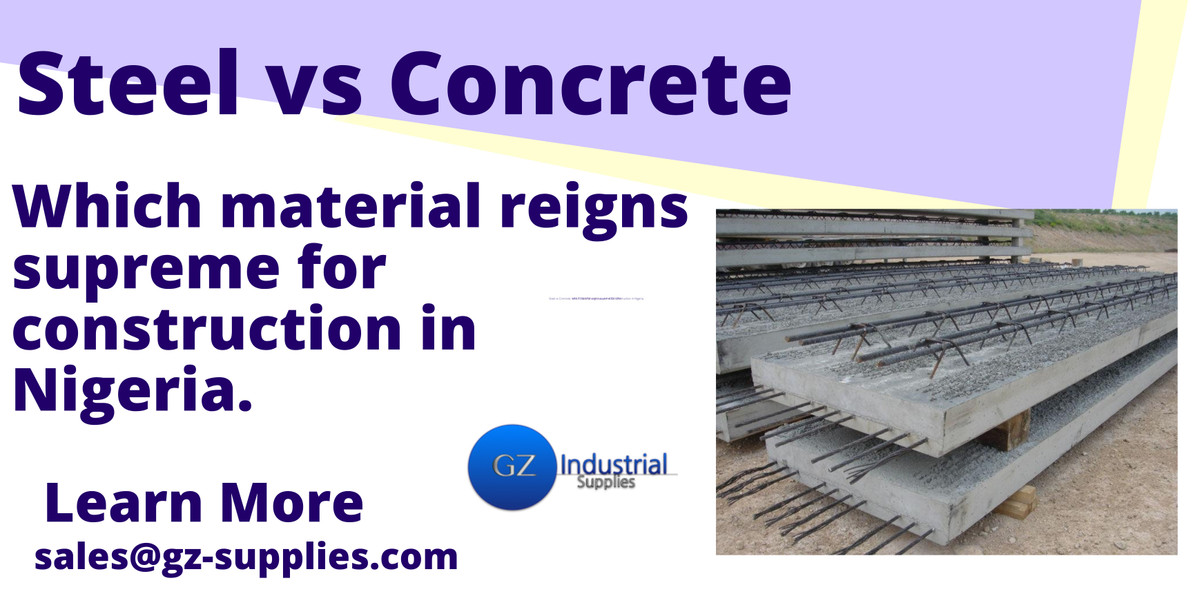Steel vs. Concrete: Which Material Reigns Supreme for Construction in Nigeria?
Steel vs. Concrete: Which Material Reigns Supreme for Construction in Nigeria?
Construction projects require careful consideration when choosing suitable building materials, especially the structural steel materials of reinforced concrete. When it comes to Structural Steel and Reinforced Concrete, both have their pros and cons. This article compares and contrasts these two materials in different aspects.
Weight: Steel structures are approximately 60% lighter than concrete structures. This makes the steel more economical and easier to handle and transport.
Cost: Steel is cheaper than other materials due to the high percentage of recycled material used in production. Steel also reduces labor costs as it is easier to handle and install.
Strength: Steel has the highest strength-to-weight ratio among building materials and is eight times stronger than concrete in tension and shear. Steel is also more resilient and has better stress resistance.
Construction: Steel components are fabricated offsite, while reinforced concrete components are mostly cast-in-situ. Steel structures require fewer human resources and skilled trades than reinforced concrete structures.
Design: Steel structures can span large distances without intermediate supports, maximizing space. Concrete can be formed into limitless shapes but has limited capability in height and spread.
Safety: Steel structures perform better in earthquake zones due to their lightness and flexibility, allowing them to absorb and reduce earthquake impact. High-strength steel connections allow for slight deformation at joints while holding members together, preventing an easy collapse of the building.
Sustainability & Environmental Impact: Up to 90% of all steel structures in the market today are created from recycling, and steel can be recycled without losing its strength. Concrete ingredients are natural and not harmful to the environment. The steel industry also maintains greenhouse gases below allowable manufacturing levels.
Steel structures have many advantages over concrete structures, including cost, strength, construction, and safety. As the market for sustainable building materials grows, steel is becoming an increasingly popular choice due to its high percentage of recycled material and environmental impact.
What about Combining Steel structures and Reinforced concrete?
Combining steel structures and reinforced concrete in construction projects has become increasingly popular due to each material's unique advantages.
Using steel structures can provide benefits such as a high strength-to-weight ratio, flexibility in design, and cost-effectiveness. On the other hand, reinforced concrete offers durability, fire resistance, and sound insulation. By combining these two materials, construction professionals can create strong and long-lasting structures while also being aesthetically pleasing.
One of the most common applications of combining steel structures and reinforced concrete is in building foundations. Steel beams and columns can be used to create a framework for the foundation, which is then filled with reinforced concrete to provide a solid base for the structure. This allows for the advantages of both materials to be utilized in a single application.
Another popular application is in building facades. Steel structures can be used to create the framework of the building, while reinforced concrete panels can be attached to the steel frame to create a solid and durable outer shell. This method allows for flexibility in design while also providing the benefits of both materials in terms of strength and durability.
It is also possible to use both materials in the same structural element. For example, a reinforced concrete beam can be strengthened by adding steel plates to the sides. This "steel plate reinforcement" technique, as it is called, allows for a greater load capacity and better resistance to bending forces.
Combining steel structures and reinforced concrete is also an environmentally friendly choice, as both materials can be recycled. Steel can be recycled indefinitely without losing strength, while concrete can be crushed and reused in new construction projects.
The combination of steel structures and reinforced concrete offers a range of benefits in terms of strength, durability, flexibility in design, and cost-effectiveness. By utilizing the advantages of both materials, construction professionals can create solid and long-lasting structures while being environmentally friendly.
Contact us for structural steel construction, concrete construction projects, and welding consumables. We give free quotations
Recent Posts
-
The Ultimate Guide to Understanding the Difference Between Ethylene Glycol and Propylene Glycol
Introduction Glycols are versatile compounds widely used across various industries, from automotive …Apr 16, 2025 -
The Best Electrical Wire in Nigeria 2025 (Updated)
Introduction Electrical wires are the basic unit of every electrical system. Electrical wires a …Apr 14, 2025 -
What are Agricultural Machinery
Introduction Agricultural Machinery is also used to improve the wide range of production practi …Apr 14, 2025



